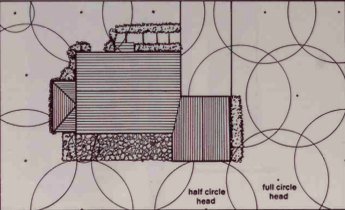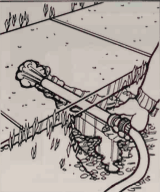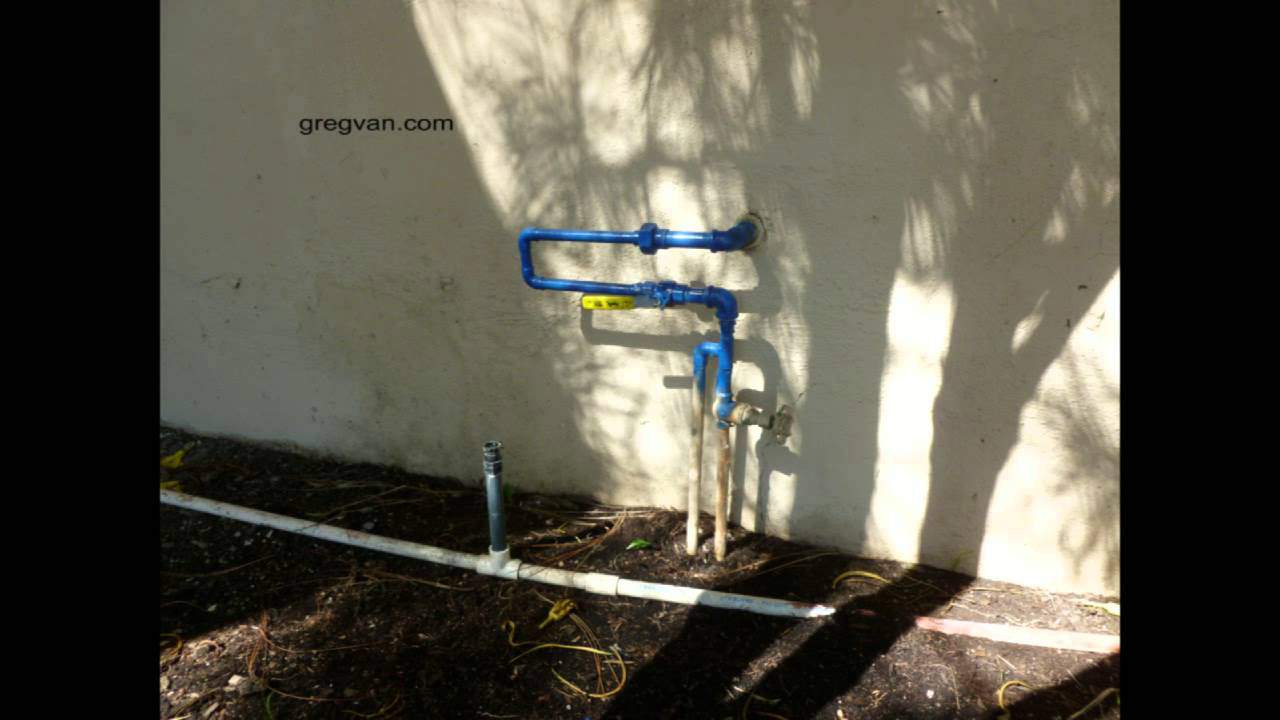Two installations to help make outdoor water use more convenient.
In warm weather, property maintenance requires a ready supply of water and a convenient source for it. Installing extra outdoor faucets makes lawn and garden watering more efficient. You can also go one step further and install an inground sprinkler system.
Contents
Installing an outdoor bib tap
Rather than patching two lawn hoses together and running extremely long lengths of hose around your property to water the lawn, fill the pool or wash the car, installing an extra hose bib tap makes for more efficient use of your garden hose.
If you have a cold-water supply pipe running inside the house close to the spot where you wish to place your new bib tap, the installation will be easy. Drill a hole through the wall so that the center of the hole is at the center of the water supply pipe. Tap into the water pipe with a copper tee and solder it in place. Attach a length of pipe long enough to extend about 25mm (1 in) beyond the exterior wall, then attach the new bib faucet
The second installation procedure is to tap a new water supply line into the existing outdoor faucet. Tap a tee into the existing faucet run and attach a new water supply run to where you need your new hose bib. The run can go through the garage, but try to keep the run in as straight a line as possible Any runs through unheated areas are subject to freezing during the cold months, so make sure the pipes are well insulated and make sure the outdoor taps have been left open during the winter months with the outdoor water shut-off valve closed
Installing a sprinkler system
A sprinkler system installation isn’t a difficult task if you use plastic plumbing and are prepared for all the digging. But once the system is installed, keeping your lawn green is no longer a boring chore.
There are many different types of sprinkler systems on the market; however, all underground systems are polyethylene hoses, which are strong yet flexible and are not subject to damage from water freezing in them during the cold months.
Sprinkler heads come in a variety of sprinkling patterns, from full circle to half circle and quarter circle, squares and waves.
Decide what your needs are first. Make a sketch of the areas to be watered, then check the specifications of the sprinklers to determine how many heads you’ll need and the necessary sprinkling patterns.
Before buying your system, you’ll also need to know your water pressure, the size of your water meter and the size of the water supply pipe you’ll be tapping into. To check the water pressure, you can ask your utilities company or you can check yourself by inserting a pressure gauge into the hose bib, checking to make sure all inside taps are shut off, then turning on the outside tap full force and taking a reading. Sprinkler heads are arranged in groups and each group is controlled by a valve. The number of valves and the amount of piping you’ll need will be determined by the number of sprinkler heads you use.
An automatic timer and a distribution control, which makes the most of your water pressure by alternating the flow through various sprinkler heads, are recommended purchases to make your lawn watering completely automatic.
Most plumbing codes require the use of an antisiphon device on the sprinkler system
between the water connection in the house and the system to prevent any back-siphoning of hose water into the house water system.
Your sprinkler system should be connected to the water supply pipes inside the house just past the water meter and the control valves outside the house.
Use a flat spade for digging V-shaped trenches 10 to 15cm (4 to 6in) deep to hold the hose. Save the sod for reuse. Tap the pipe into the trench and backfill.
When laying a pipe under a concrete walkway, dig the trench from both sides, and insert a steel pipe with a wider diameter than your plastic hose under the walk. Cover the end of your plastic piping to keep debris from entering the hose, then slide the plastic hose through the steel pipe to the other side and backfill.
Sprinkler heads that have drain fittings will need a dry well. Dig a hole 30cm (12in) wide and 30cm (12in) deep and fill with coarse gravel for drainage.
Don’t bend your plastic piping when installing it, and keep all curves to a minimum to prevent a reduction in water pressure to the sprinkler head.
UNDERGROUND SPRINKLER SYSTEM

Before buying your system, make a plan of your lawn and determine where the sprinklers will be necessary, the number of heads you’ll need and the sprinkling patterns. Heads are available in full circle, half circle, quarter circle, squares and waves.
CLEARING OBSTRUCTIONS

To install a pipe under a walkway, dig a trench under the sidewalk and insert a steel pipe. Use a garden hose to flush out the pipe.
